Featured image credit: SpaceX
Lift Off Time | November 12, 2022 – 16:06 UTC | 11:06 EST |
|---|---|
Mission Name | Galaxy 31 & 32, two telecommunication satellites |
Launch Provider | SpaceX |
Customer | Intelsat |
Rocket | Falcon 9 Block 5, B1051-14; 119.07 day turnaround time |
Launch Location | Space Launch Complex 40, Cape Canaveral Space Force Station, Florida, USA |
Payload mass | Unknown, ~3,500 kg each |
Where did the satellites go? | Geostationary Transfer Orbit (GTO), GTO-1611 |
Did they attempt to recover the first stage? | No |
Where did the first stage land? | B1051 splashed down in the Pacific Ocean |
Did they attempt to recover the fairings? | The fairing halves were recovered from the water ~760 km downrange by Bob |
Were these fairings new? | No |
This was the: | – 185th Falcon 9 launch – 122nd Falcon 9 flight with a flight-proven booster – 126th re-flight of a booster – 48th re-flight of a booster in 2022 – 52nd launch for SpaceX in 2022 (a record) – 103rd SpaceX launch from SLC-40 – 158th orbital launch attempt of 2022 |
Where to watch | Official Replay |
How Did It Go?
SpaceX successfully launched two communication satellites to geostationary transfer orbit (GTO) for Intelsat. The Galaxy 31 & 32 satellites were launched from SpaceX’s launch pad Space Launch Complex 40, at the Cape Canaveral Space Force Station, in Florida, USA. Since deployment from the second stage, the satellites will spend the coming months raising their orbits to their operational orbit in geostationary Earth orbit (GEO). It is expected that the satellites will be operational by November 2022.
What are the Galaxy 31 & 32 satellites?
The Galaxy 31 & 32 satellites are replacements for Intelsat’s aging satellites in GEO slots above America. Each of these satellites is a C-band-only communication satellite, allowing the satellites to service North America with television broadcasting.
The satellites are thought to be based on the GEOStar-3 satellite Bus and is equipped with the IHI BT-4 propulsion module. Built by the Japanese company IHI aerospace, the BT-4 is a pressure-fed engine that runs on N2O4 and Hydrazine. It produces 500 N of thrust in a vacuum with an ISP of ~320 seconds. This engine is also used on Cygnus and HTV — two ISS resupply vehicles.

These satellites are a part of Intelsat order of six new satellites: four of which will be built by Maxar Technologies and two which will be built by Northrop Grumman. If all of these satellites are operational by December 5, 2023, Intelsat will receive $4.87 billion from the Federal Communication Commission (FCC) in the FCC’s attempts to clear the 300 MHz spectrum, which is used in cellular 5G networks.
The satellites have an expected lifespan of 15 years, and they are powered by two deployable solar arrays and batteries. While neither Intelsat or Maxar have released the mass of the satellite, it is expected that the satellite masses roughly 3,500 kg based on previous satellites and the Falcon 9’s performance.
What Is Falcon 9 Block 5?
The Falcon 9 Block 5 is SpaceX’s partially reusable two-stage medium-lift launch vehicle. The vehicle consists of a reusable first stage, an expendable second stage, and, when in payload configuration, a pair of reusable fairing halves.
First Stage
The Falcon 9 first stage contains nine Merlin 1D+ sea-level engines. Each engine uses an open gas generator cycle and runs on RP-1 and liquid oxygen (LOx). Each engine produces 845 kN of thrust at sea level, with a specific impulse (ISP) of 285 seconds, and 934 kN in a vacuum with an ISP of 313 seconds. Due to the powerful nature of the engine, and the large amount of them, the Falcon 9 first stage is able to lose an engine right off the pad, or up to two later in flight, and be able to successfully place the payload into orbit.
The Merlin engines are ignited by triethylaluminum and triethylborane (TEA-TEB), which instantaneously burst into flames when mixed in the presence of oxygen. During static fire and launch the TEA-TEB is provided by the ground service equipment. However, as the Falcon 9 first stage is able to propulsively land, three of the Merlin engines (E1, E5, and E9) contain TEA-TEB canisters to relight for the boost back, reentry, and landing burns.
Second Stage
The Falcon 9 second stage is the only expendable part of the Falcon 9. It contains a singular MVacD engine that produces 992 kN of thrust and an ISP of 348 seconds. The second stage is capable of doing several burns, allowing the Falcon 9 to put payloads in several different orbits.
For missions with many burns and/or long coasts between burns, the second stage is able to be equipped with a mission extension package. When the second stage has this package it has a grey strip, which helps keep the RP-1 warm, an increased number of composite-overwrapped pressure vessels (COPVs) for pressurization control, and additional TEA-TEB.
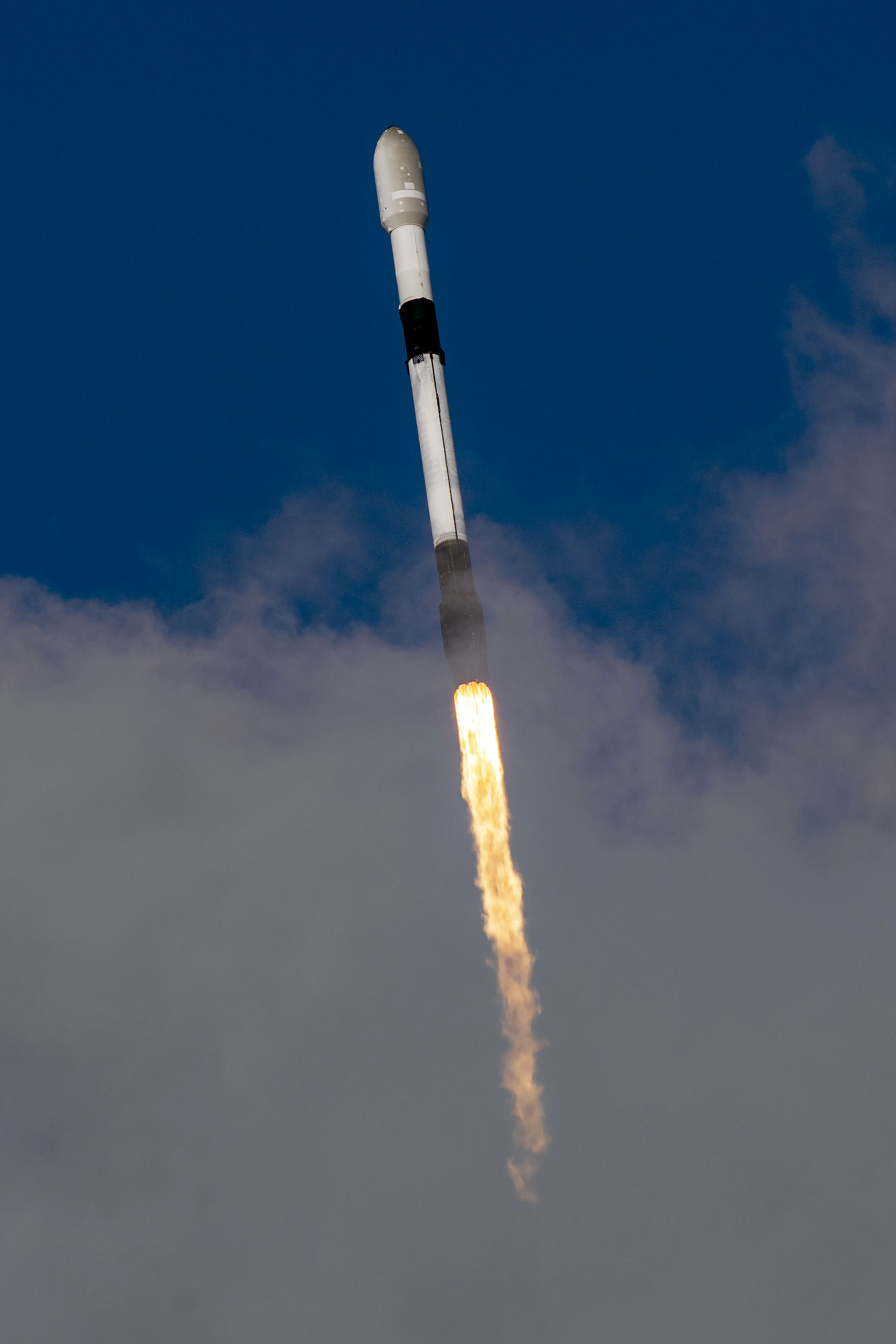
Falcon 9 Booster
The booster supporting the Galaxy 31 & 32 mission was B1051, which had supported thirteen previous flights. Hence, its designation for this mission is B1051-14. This was the booster’s final flight, as it was intentionally expended.
| B1051’s missions | Launch Date (UTC) | Turnaround Time (Days) |
| SpaceX Demonstration Mission-1 | March 2, 2019 07:49 | N/A |
| RADARSAT Constellation | June 12, 2019 14:17 | 102.27 |
| Starlink V1.0 L3 | January 29, 2020 14:06 | 230.99 |
| Starlink V1.0 L6 | April 22, 2020 19:30 | 84.22 |
| Starlink V1.0 L9 | August 7, 2020 05:12 | 106.40 |
| Starlink V1.0 L13 | October 18, 2020 12:25 | 72.30 |
| SXM-7 | December 13, 2020 17:30 | 56.21 |
| Starlink V1.0 L16 | January 20, 2021 13:02 | 37.81 |
| Starlink V1.0 L21 | March 14, 2021 10:01 | 52.87 |
| Starlink V1.0 L27 | May 9, 2021 06:42 | 55.86 |
| Starlink Group 4-4 | December 18, 2021 12:41 | 223.25 |
| Starlink Group 4-12 | March 19, 2022 04:42 | 90.67 |
| Starlink Group 4-22 | July 17, 2022 14:20 | 120.40 |
| Galaxy 31 & 32 | November 12, 2022 16:06 | 119.07 |
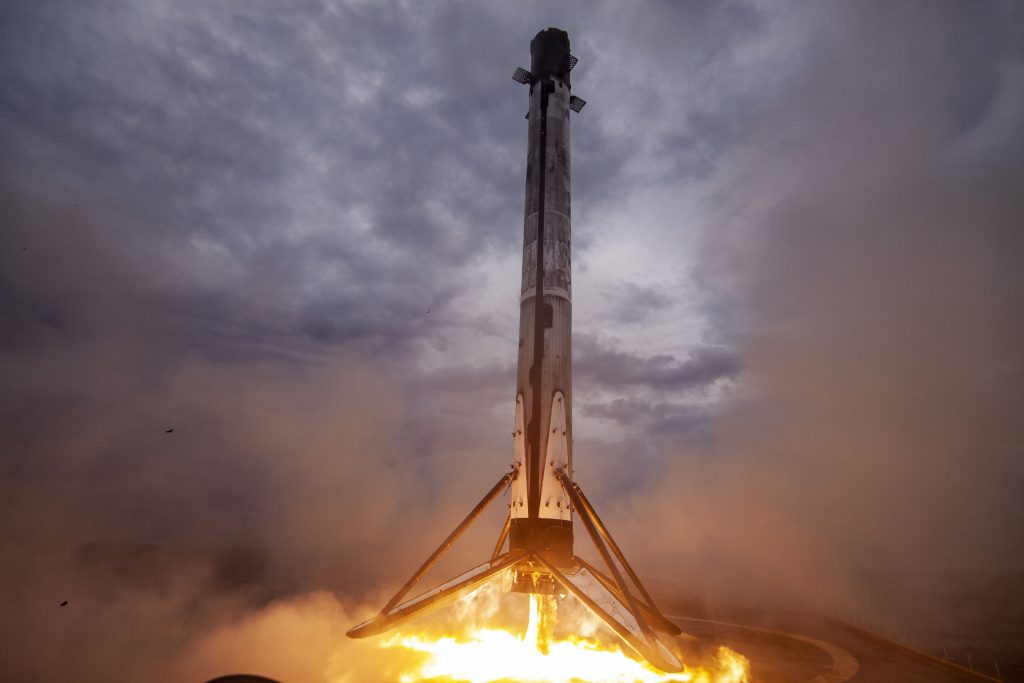
Falcon 9 Fairings
The Falcon 9’s fairing consists of two dissimilar reusable halves. The first half (the half that faces away from the transport erector) is called the active half, and houses the pneumatics for the separation system. The other fairing half is called the passive half. As the name implies, this half plays a purely passive role in the fairing separation process, as it relies on the pneumatics from the active half.
Both fairing halves are equipped with cold gas thrusters and a parafoil which are used to softly touch down the fairing half in the ocean. SpaceX used to attempt to catch the fairing halves, however, at the end of 2020 this program was canceled due to safety risks and a low success rate. On Galaxy 31 & 32, SpaceX attempted to recover the fairing halves from the water with their recovery vessel Bob.
In 2021, SpaceX started flying a new version of the Falcon 9 fairing. The new “upgraded” version has vents only at the top of each fairing half, by the gap between the halves, whereas the old version had vents placed spread equidistantly around the base of the fairing. Moving the vents decreases the chance of water getting into the fairing, making the chance of a successful scoop significantly higher.
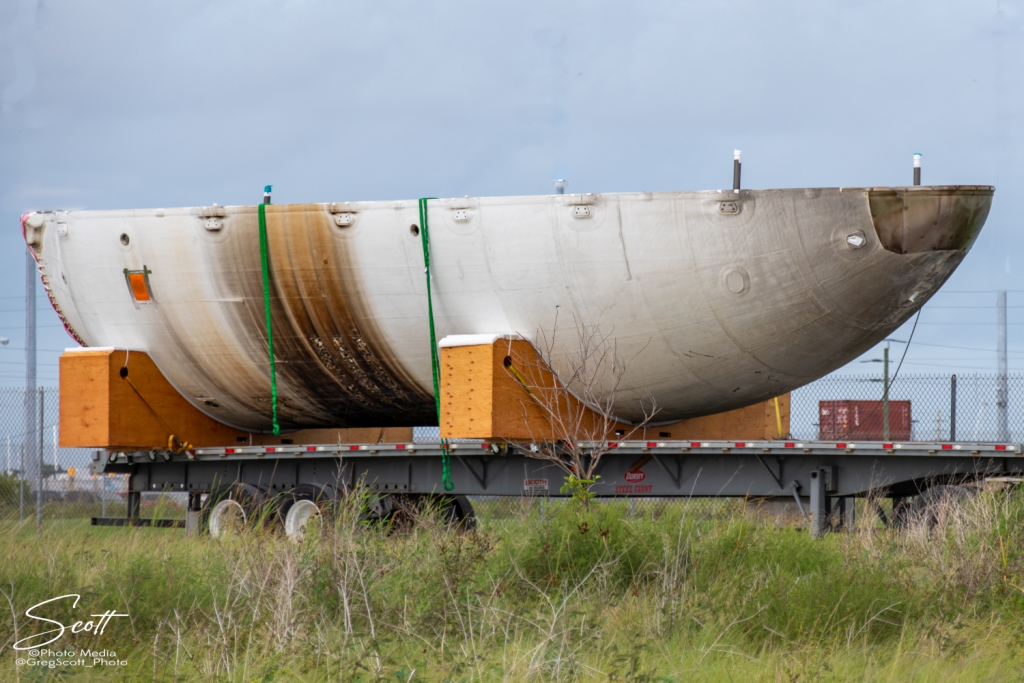

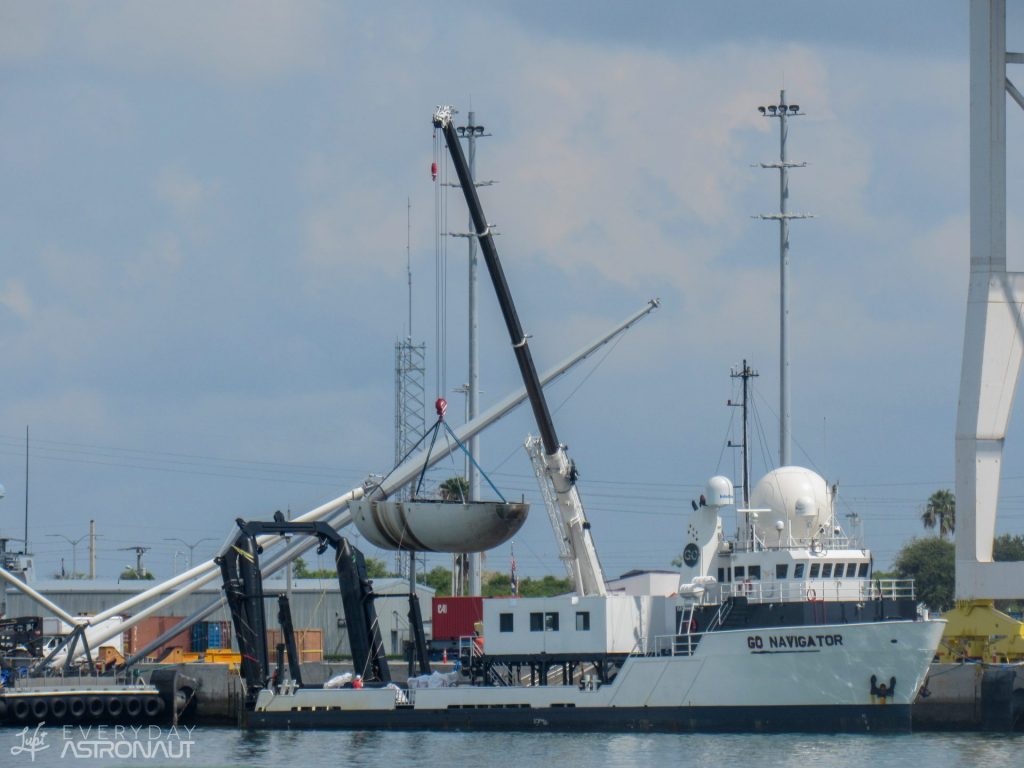
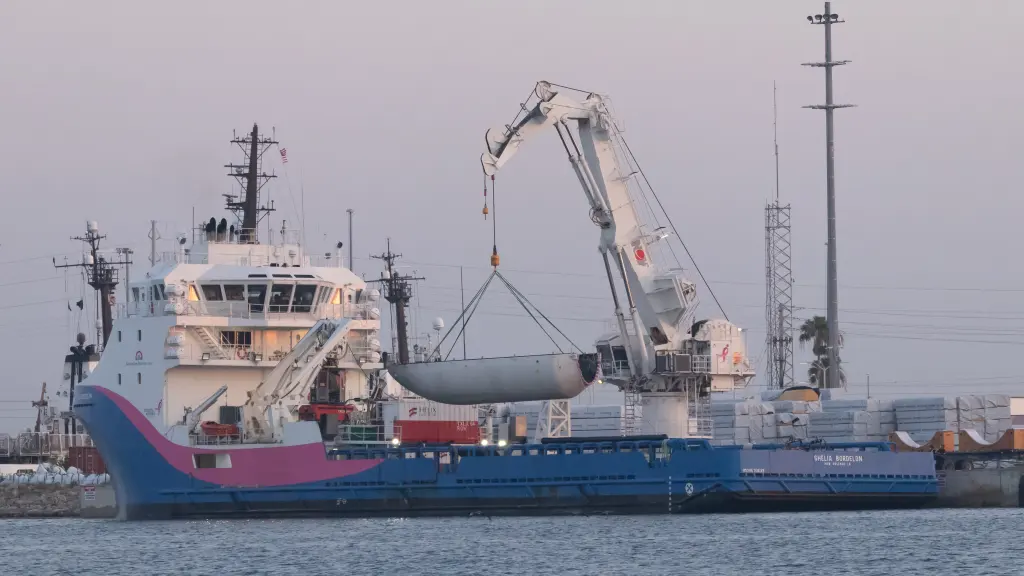
Galaxy 31 & 32 Countdown
All times are approximate
| HR/MIN/SEC | EVENT |
|---|---|
| 00:38:00 | SpaceX Launch Director verifies go for propellant load |
| 00:35:00 | RP-1 (rocket grade kerosene) loading underway |
| 00:35:00 | 1st stage LOX (liquid oxygen) loading underway |
| 00:16:00 | 2nd stage LOX loading underway |
| 00:07:00 | Falcon 9 begins engine chill prior to launch |
| 00:01:00 | Command flight computer to begin final prelaunch checks |
| 00:01:00 | Propellant tank pressurization to flight pressure begins |
| 00:00:45 | SpaceX Launch Director verifies go for launch |
| 00:00:03 | Engine controller commands engine ignition sequence to start |
| 00:00:00 | Falcon 9 liftoff |
Galaxy 31 & 32 Launch, Landing, And Deployment
All times are approximate
| HR/MIN/SEC | EVENT |
|---|---|
| 00:01:12 | Max Q (moment of peak mechanical stress on the rocket) |
| 00:02:43 | 1st stage main engine cutoff (MECO) |
| 00:02:46 | 1st and 2nd stages separate |
| 00:02:53 | 2nd stage engine starts (SES-1) |
| 00:03:32 | Fairing deployment |
| 00:08:05 | 2nd stage engine cutoff (SECO-1) |
| 00:26:50 | 2nd stage engine restarts (SES-2) |
| 00:28:00 | 2nd stage engine cutoff (SECO-2) |
| 00:33:31 | Galaxy 32 deploys |
| 00:38:41 | Galaxy 31 deploys |





Awesome.
Do we know why the 1st stage booster is being expended?